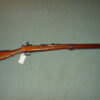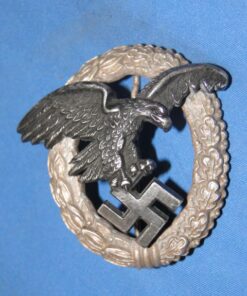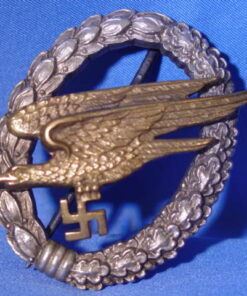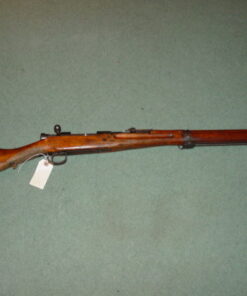Sweedish Rifle – 1800’S -gewehr 43 sale
$1,100.00
gewehr 43 sale
Swedish Rifle of the 1800s gewehr 43 sale
Key Models
- M/96 Rifle:
- Introduced in 1896, the M/96 became the standard infantry rifle for the Swedish Army.
- It is a bolt-action rifle chambered for the 6.5x55mm Swedish cartridge, known for its accuracy and effective range.
- The M/96 was notable for its Mauser-style action, which allowed for smooth cycling and reliable operation.
- M/1887 Rifle:
- This was an earlier model, developed as a transition from muzzle-loading firearms to breech-loading rifles.
- The M/1887 featured a unique design that included a single-shot mechanism, transitioning to more modern repeating rifles.
Design Features
- Construction: Swedish rifles were typically well-crafted, using high-quality steel and wood, which contributed to their durability and reliability in various conditions.
- Sights: Many models featured adjustable sights, allowing for improved accuracy at different ranges.
- Ergonomics: The design of the stock and the balance of the rifle were carefully considered to enhance handling and comfort for the shooter.
Historical Context
The 1800s was a period of significant military reform in Sweden, influenced by the experiences of other European nations. The introduction of these rifles improved the effectiveness of Swedish forces, particularly during conflicts and training exercises.
Legacy
Swedish rifles from the 1800s, particularly the M/96, remain popular among collectors and shooting enthusiasts today, celebrated for their craftsmanship and historical significance. The innovations introduced during this period laid the groundwork for future developments in military firearms.
The Swedish rifles of the 1800s, particularly the M/1845, played a crucial role in the evolution of military firearms. Their innovative designs and reliable performance reflect the changing nature of warfare during the period and laid the groundwork for further advancements in Swedish military arms. Today, these rifles are sought after by collectors and enthusiasts, appreciated for their historical significance and craftsmanship.
Be the first to review “Sweedish Rifle – 1800’S -gewehr 43 sale” Cancel reply
Related products
WW II UNIFORM AND BADGES
WW II UNIFORM AND BADGES
WW II UNIFORM AND BADGES
WW II RIFLES
WW II RIFLES
WW II DAGGERS
WW II RIFLES
WW II UNIFORM AND BADGES





























Reviews
There are no reviews yet.